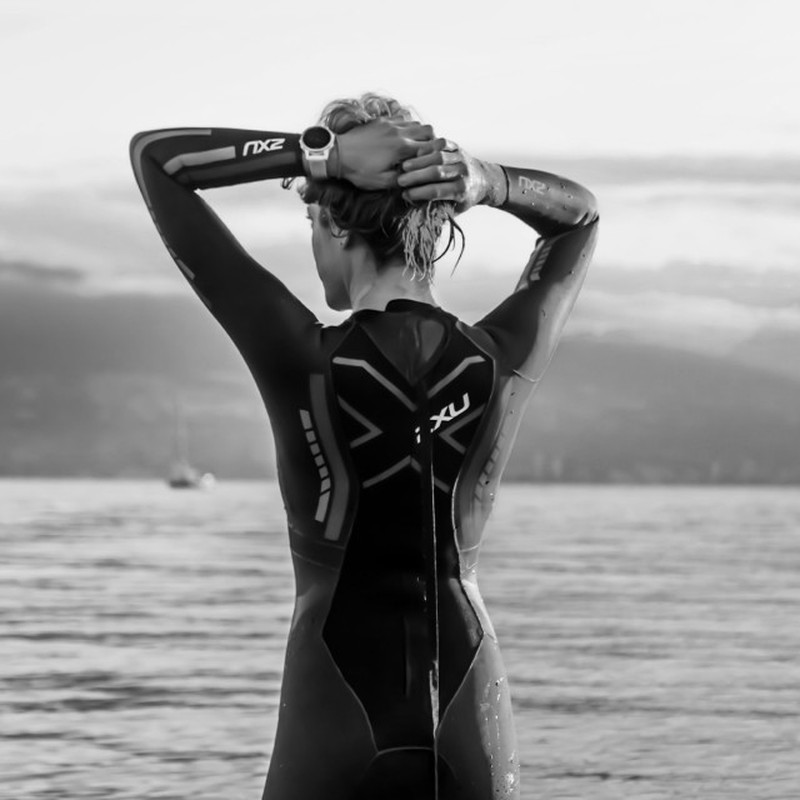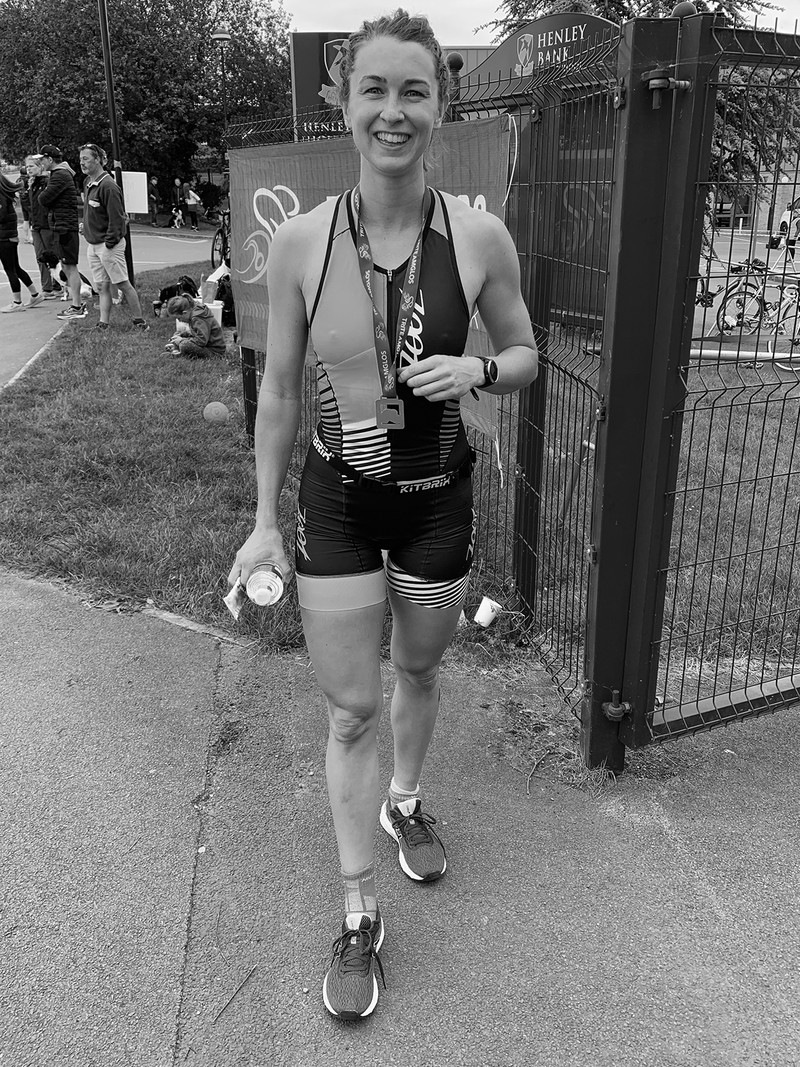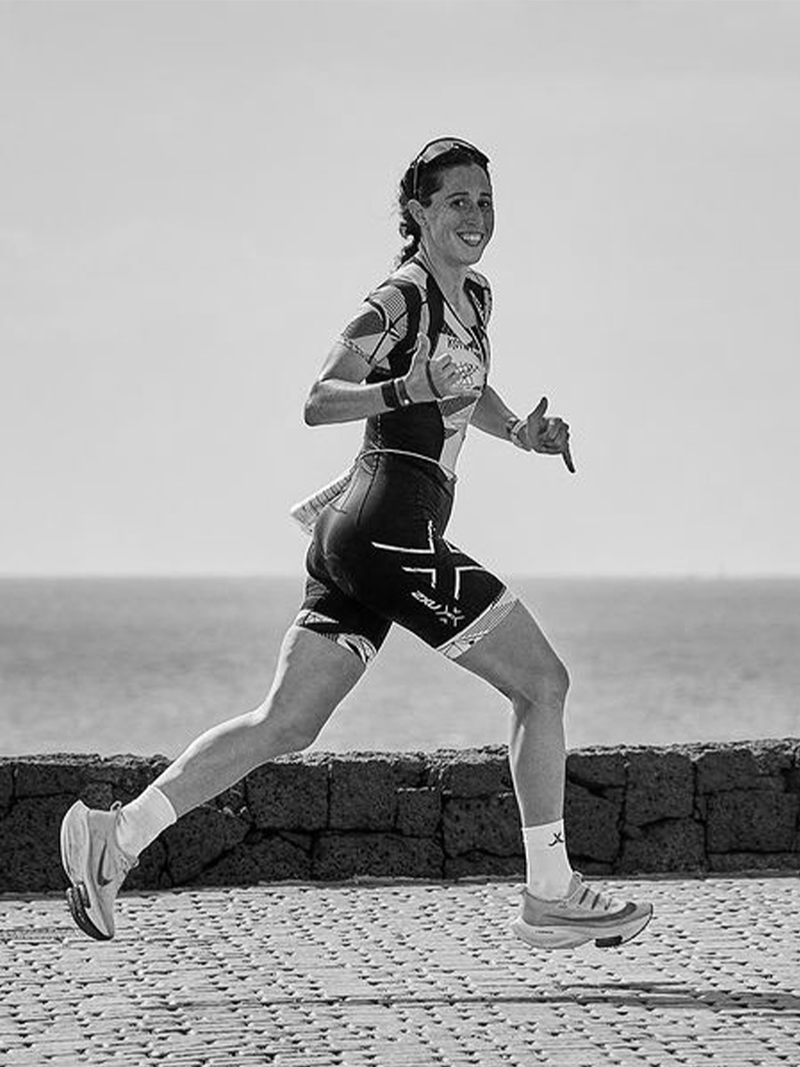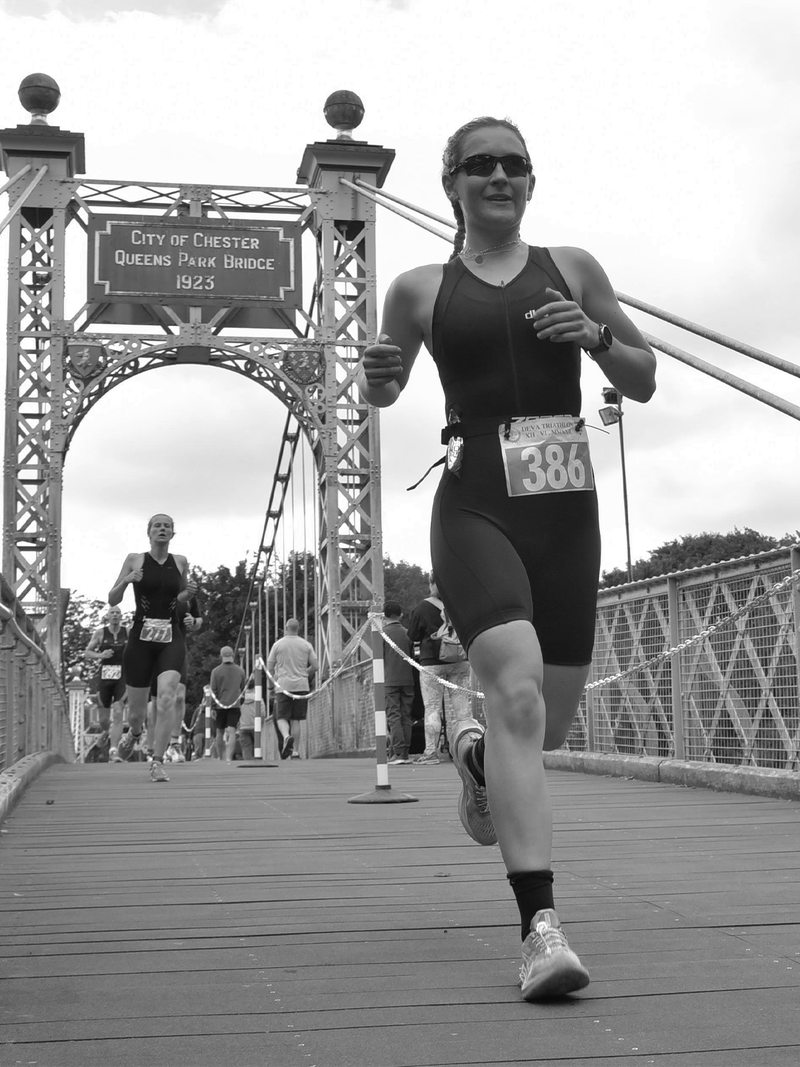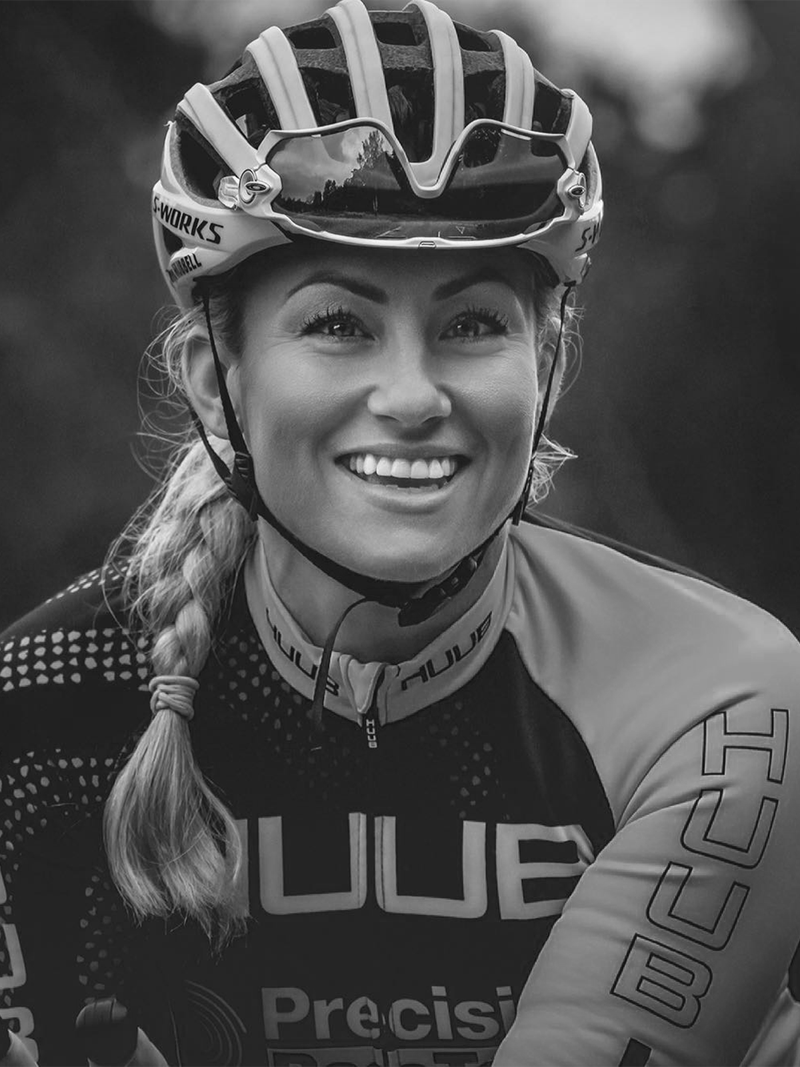An Expert Guide To Tackling A Triathlon
Choose Your Distance
“For beginners, the idea of embarking on the journey to your first triathlon can be daunting, particularly when you consider there are eight variations all operating under the classification of ‘triathlon’. For a newcomer, the most common distinctions are the Olympic (standard) and the sprint. The Olympic triathlon is a 51.5km route – split into a 1.5km swim, a 40km bike ride followed by a 10km run to the finish line. The sprint is exactly half the distance of the Olympic in every category, comprising a 750m swim, 20km bike and 5km run. It’s a great starting point for beginners.” – Ruth Stone, PT & fitness expert at Sweatband
Prioritise Your Weakest Discipline
“Training is essential, regardless of the distance you’re training for. Your training plan should be a progressive-based plan, increasing incrementally and weaving rest weeks in to allow your body to recover and acclimatise to the demand. Ideally, your plan should be equally divided between swimming (preferably open water), biking and running. On weeks where this split isn’t possible, focus on your weakest one. It can be easy to focus on what you perform best at and enjoy, but it’s best not to fall into this classic training pothole.” – Ruth
Try A Brick Session
“This means going straight from the bike into a run. The first few times you try this, it will feel strange – your legs will feel like jelly – but practice is the only thing for it. Try going for a 20km bike ride, have your housemate or other half ready for you outside, so you can leave your bag with them, then go straight into the run without a break. Run for five minutes initially, then ten minutes, and then increase in increments of five minutes until you feel ready.” – Harriet Le Seve, founder of Le Seve Fitness & PT at ONE LDN
Join A Club
“One of the best ways to learn as a beginner is to join a triathlon club and get involved in all the disciplines. This way, you can learn what you need to focus most of your time on improving – it could be your cardiovascular capacity or swim technique. A club will have planned out training sessions for you, and can help motivate you on dark, cold, winter nights.” – Harriet
Think About How Your Bike Feels
“A well-fitting bike is far more important than purchasing the most expensive bike with all the bells and whistles. Consider going for a slightly more affordable model and spending a bit extra on a personal bike fit – it may sound indulgent, but a bike that suits your body will last you years and years. The most important thing is that you feel safe and comfortable riding it.” – Harriet
Don’t Buy A Wetsuit Online
“When it comes to a wetsuit, try, try and try some more. Do your research online and then go into a few different stores to try on different styles once you have a shortlist. A wetsuit should be snug, like a second skin. It can be hard to find this online.” – Harriet
Don’t Forget The Extras
“Whether you’re signing up for a sprint triathlon or are going further, it’s important to think about your running trainers. Go one size up (I go 1.5 sizes up) as your feet will be warm by the time you’re ready to run and will therefore have expanded in size. A decent sports watch is also great – it can help you pace yourself over each discipline, so you don’t run out of energy during the run. A good swimming hat and goggles are also essential.” – Harriet
Practise Negative Splits
“One of the most common mistakes people make on race day is starting out too quickly and running out of steam by the end. Start with a relaxed swim – focus on your technique rather than splashing about and losing energy. When it comes to the run, negative splits are essential: this means your first kilometre is the slowest, then you increase your pace slightly until you are giving it your all on the final kilometre.” – Harriet
Inspired? Here, Four Women Share More About Their Triathlon Experiences …
Emma Butterworth
Senior Insights Manager
I’ve done eight triathlons. I mostly do sprint distances (750m swim, 20km bike, 5km run) but I’ve also done two longer Olympic distances. The sprint distances take me around 90 minutes and the Olympic distance just over three hours. Although I’m a naturally competitive person, I don’t track my triathlon times as much as when I’m running. This is because timings can vary considerably between courses, whether it’s down to course elevation or the exact distance of each discipline.
Sprint triathlons are a great place to start. No discipline is long enough to require months of training – they are each just the right distance that when you get tired of one, it’s onto the next. That said, practise swimming in open water at least once before the race. The temperature can take your breath away. Aside from that, ensure you’re completing each distance around once a week.
You can borrow the kit from friends initially. For my first race, I didn’t wear a trisuit, and wore trainers on the bike, not cleats. I borrowed a wetsuit from a friend, as I was hesitant to invest in kit until I knew for sure that triathlons were for me. I spent hours searching for a trisuit and eventually found one from Zoot which I love. I recently bought a pair of HUBB goggles – they work well with contact lenses.
Races often start early. I tend to have a bowl of porridge before leaving home then a banana a few minutes before the race starts. On a sprint distance, I’d take a gel at the end of the cycle or just as I start the run.
Put your hair up. One of the best pieces of advice someone gave me was to find a hairstyle that works for a swimming cap, helmet and run. For me, it’s a French plait.
Be organised. Some triathlons offer the option to register the day before. This is a great idea if you want to suss out the course, familiarise yourself with the set-up and put worries at ease. I also get my bike serviced a week or two before a race, so I have the confidence everything is going to work.
Visit JustGiving.com
India Lee
Pro GB Triathlete
Consistency wins. It’s far better to do 100% of your sessions at 75% intensity than 75% of your sessions at 100% intensity. Training for a triathlon can be tough but factor training into your week and it will soon become a habit – remember, every little counts. Finding a group to train with can also help – this will give you accountability, which helps with motivation.
You could work with a coach. Ahead of every race, my coach and I talk about my strengths and weaknesses and go from there. There’s no magic workout or one-off session that will make you suddenly able to do a triathlon. What will help you get stronger is ticking off achievable sessions day to day. Then, at the end of your training block ahead of a race, you’ll be in a better state of fitness – both physically and mentally – compared to when you started.
Fatigue and a lack of motivation are inevitable. Three sports is a lot to fit into a training schedule, and the juggling can be full on. To work through this, create a routine you know you can stick to and try not to overthink it.
Comfortable kit is vital. Proper cycling shorts change everything, while decent goggles that don’t leak make everything easier. I wear Magic5 goggles, which are made to measure through an app that scans your face.
Carbs are king. Fuelling is one of the most important parts of race day. If you’re under-fuelled, there’s no way you can perform to your fullest potential. Find a gel or sports drink you like the taste of and practise taking it during training so it’s not a shock to the system. Precision Fuel is a great brand for electrolyte tablets – its website has a clever calculator to help you work out the level of electrolytes you need based on your sweat rate.
Start slow. Take the first half of the race easier than you think and build into it – it’s a much better experience to finish strong than to shuffle to the finish line.
Follow @IndieLee_Tri
Molly Bryce
Account Executive
I’ve done one triathlon. It was an Olympic distance and my overall time was 2 hours and 44 minutes. As it was my first, I tried not to let my competitive spirit get the better of me. I’d been advised by friends to enjoy the atmosphere, crowds and like-minded people competing in the race.
Don’t be afraid to make your own training plan. I was already a keen runner and swimmer, and had been cycling for around eight months, so all the plans for beginner or intermediate level didn’t feel right. I tried to stick with three runs, three swims and three bike sessions a week, although I mixed things up with intervals, pyramid sessions and longer endurance sets. Variety in your training is essential.
Not everything will go to plan. Three weeks before the race, I injured my knee during a 50-mile ride in the Peak District. I had to take the last few weeks easier than planned, so swimming and gentle running kept me ticking over.
Investing in a trisuit is crucial. Not only is it practical when it comes to transitioning between sets, but it also makes you feel more professional, and therefore you perform better. Body Glide is also a great product – I apply it to my shoulders and neck to stop the wetsuit from rubbing.
Write a check list the day before a race. Think about everything you’ll need for the race itself as well before and afterwards, and check it meticulously before going to bed. There are lots of things to remember for a triathlon, so preparation is key.
Visit CompetePR.com
Raya Hubbell
Pro GB Triathlete
Be realistic. When training for my initial triathlons prior to having a coach, I read countless books and blogs and formulated my own training plan. I bought a wall calendar and planned training around the event, taking into consideration work commitments, life balance and when it was going to be feasible to commit to a longer session. Ultimately, I found it challenging to strike the right balance so I invested in a coach to guide me through the process.
It won’t all be plain sailing. Chances are you’ll experience some form of niggle, ache or pain, which you’ll have to work through. Patience is key. It’s also important to know that no one training for a triathlon has a smooth ride, so don’t stress if everyone on social media makes you think otherwise. It’s much less of an adventure if it all goes to plan.
Recovery plays a part. Over the years, I’ve discovered the importance of recovery. After all, the more efficiently you can recover, the quicker you are back out training. Find what works for you – for me, it’s KYMIRA, an infrared and compression clothing brand, plus collagen supplements to kickstart muscle synthesis.
Don’t try anything new on race day. It can take up to ten weeks for your body to adapt to the amount of carbs and fluids you need to take during a longer-distance triathlon, so be patient, and make sure you are practising well in advance.
Prepare for the worst-case scenario. Practise changing punctures, what you’ll do if you drop a gel, or get a stitch. Be prepared for anything and everything to go wrong – if you are prepared for it and it does happen, you won’t be phased by it.
Visit KymiraSport.com & follow @Raya_Usher_Precision_Coach.
Also visit HarrietLeSevePT.co.uk & Sweatband.com
DISCLAIMER: Features published by SheerLuxe are not intended to treat, diagnose, cure or prevent any disease. Always seek the advice of your GP or another qualified healthcare provider for any questions you have regarding a medical condition, and before undertaking any diet, exercise or other health-related programme.
DISCLAIMER: We endeavour to always credit the correct original source of every image we use. If you think a credit may be incorrect, please contact us at info@sheerluxe.com.
